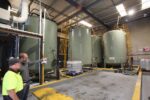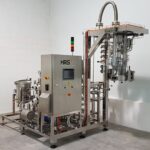Heavy lifting in sports and active lifestyle pays off
Mars has signed an agreement to purchase a majority shareholding in German targeted nutrition business, foodspring and, as part of this transaction, Fonterra has sold its interest in foodspring’s parent Goodminton A.G, and will realise a gain on sale of $64 million. Fonterra’s Chief Operating Officer NZMP, Kelvin Wickham, says the partnership with foodspring has been an exciting early activity for Fonterra’s new Sports and Active Lifestyle business unit. “From day one both foodspring and ourselves could see how our two companies would complement each other to make the most of the fast-growing sports and active market. “foodspring had established a strong on-line sales channel and a digital nutrition and wellbeing coach, and we’re the protein innovators with a range of high value, advanced ingredients. “Both companies could see the growth opportunities within the targeted nutrition market. And that’s exactly what’s happened. Over the past 18 months foodspring has become the fastest growing targeted nutrition brand in Europe. “At the same time, the partnership gave us immediate and direct access to the fast-growing consumer Sports and Active Lifestyle segment. This is not just about professional athletes or bodybuilders anymore. Today it’s about everyday people taking more interest in their health and wellbeing, living longer and leading more active and healthier lives. “This continues to be a really attractive market for our dairy protein and dairy speciality ingredients and we will keep up the momentum in this market. We are excited about continuing our relationship with foodspring and its new owners Mars, who will remain a valued customer of our NZMP ingredients business,” says Mr Wickham. The Sports and Active Lifestyle market is one of the fastest growing categories within the food and beverage industry. It is helping people with their health and wellness needs and is estimated to be worth […]










